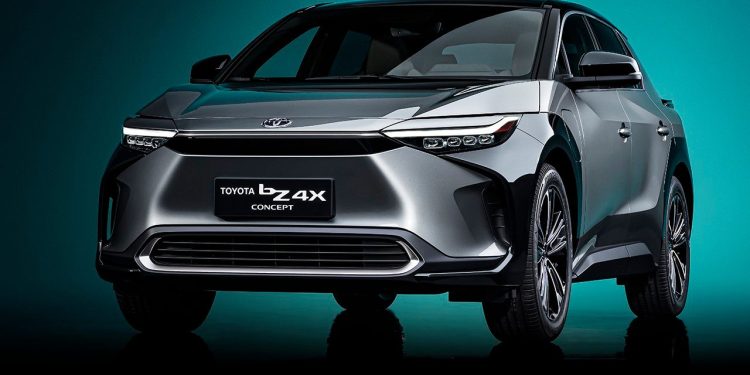Toyota wants its EV batteries to have 90% capacity after 10 years
Words: Matthew Hansen
It appeared last week that Toyota had finally turned something of a corner, when it announced a significant US$14billion investment into electric vehicle battery tech, specifically solid state battery tech.
The firm has also made a few more statements about its battery aims, specifically in regards to the bZ4x, the RAV4-sized SUV that’s set to be its first pure electric vehicle.
At the same conference where Toyota confirmed its big investment in EVs, it also dropped a few interesting nuggets of information about what it expects from its batteries. Among these nuggets was the hope that the battery in its production-version bZ4x would retain 90 per cent of its charge after 10 years of use.
‘Range anxiety’ remains a consistent worry among EV cynics, and it’s a concept that often gets compounded by anecdotal stories about how battery range gets depleted over time depending on things like how often a car is plugged into a fast charger and lack of maintenance.
“We have applied the technologies that we have cultivated through the development of batteries for HEVs to PHEVs, and the batteries in the C-HR BEV have a greatly higher capacity retention rate after 10 years than the batteries hitherto used in our PHEVs,” said Toyota in its presentation.
“Furthermore, for the Toyota bZ4X, which is scheduled to be launched soon, we have set a target of 90 percent endurance performance, which is one of the highest in the world, and we are currently finalizing our development efforts to achieve it.”
Toyota says a 90 per cent retention rate is “world class”. Curiously, a diagram plotting these expectations on a chart showed that the first-generation Prius generally retains only about 55 per cent of its capabilities after 10 years, and the second-generation Prius about 65 per cent.
How does Toyota aim to achieve this improvement? Well, improved management of temperatures and a focus on individual cells are both pieces of the puzzle.
“It is known that each battery cell shows signs of localized abnormal heat generation during spirited driving or other driving that places a large load on the battery,” Toyota added.
“By analyzing the phenomena occurring inside the battery and conducting a vast amount of model experiments, we have been able to clarify the effect of driving style on the battery, as well as the mechanism of this effect.
“Based on the results, we have been able to detect signs of abnormal local heating of cells through multiple monitoring of voltage, current, and temperature of individual cells, blocks of cells, and the entire battery pack.
“The battery is then controlled to prevent abnormal heat generation. We will maintain our concept of ensuring safety, security, and reliability down to the local areas of each battery even when it comes to BEV systems, and we will continue to refine that concept.”





